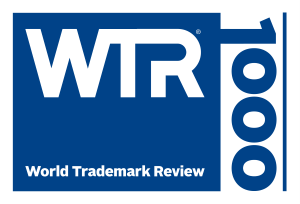A new financial reporting challenge is looming for publicly traded companies: compliance with the most significant change in executive compensation disclosure in more than 15 years.
Approved in August 2022, the long-delayed Securities and Exchange Commission (SEC) rules aim to help investors better understand the relationship between the executive compensation of an entity’s named executive officers (NEOs) and corporate financial performance. The following article provides an overview of the new rules, their potential impact on companies and action items companies can take to meet compliance requirements.
Overview of the Rules
In August 2022 the SEC adopted the rules, which were proposed in 2015 and amend existing disclosure rules to comply with a mandate under the Dodd-Frank Act. The amendments apply to all reporting companies (except for foreign private issuers, registered investment companies and emerging growth companies) and should be incorporated into proxy and information statements.
Companies must start their compliance efforts because the rules apply to public companies with fiscal years ending on or after December 16, 2022. Companies not in compliance face the risk of SEC action.
These rules involve three main requirements:
- a pay vs. performance table,
- a clear description of the relationship between executive compensation and company financial performance as well as the relationship between a company’s total shareholder return (TSR) and the TSR of its peer group; and
- a tabular list of the performance measures a company determines are most important for determining the pay of its named executive officers.
Companies must disclose “compensation actually paid” (as determined in accordance with the new rules) to the CEO and the average compensation actually paid to the other NEOs. They must also disclose data that reflects the company’s net income, TSR, peer group TSR and the financial measure that the company has selected as representing the most important measure used to link compensation to performance.
When calculating shareholder returns after the first year, companies should keep in mind that totals are cumulative, meaning companies must incorporate the previous years’ data together with the current year.
If a company has had more than one CEO during the reporting period, the company must include additional columns for each individual, making the presentation more complex.
The descriptive disclosure can be in narrative form, graphic form, or both. Companies should use whichever form they feel best describes the relationship between executive pay and financial performance.
For the tabular list of financial measures, companies must disclose between three and seven financial performance measures they consider the most important in determining CEO and NEO pay for the last fiscal year. The tabular list may include non-financial performance measures if they are among the most important measures and if the company has already disclosed three financial metrics. According to the rules, these measures do not have to be ranked.
The new rules give companies the flexibility to decide where to place the disclosures in their proxy statements. For companies whose compensations committees do not review TSR, net income or the SEC’s “compensation actually paid” criteria when determining CEO and NEO compensation, they may consider establishing a new section after the standard Compensation Disclosure and Analysis.
Investor Reactions and Action Items for Companies
How might investors react to the new disclosures?
It will likely take several years until reporting companies see the full impact of these rules because it is not certain how proxy advisors will incorporate the new disclosure into their models. Activist investors, however, will use the data as a weapon – if they think they see discrepancies between pay and performance, they will use the data to fight pay proposals and other initiatives.
The requirements are complex, and most public companies likely will not be able to handle all aspects internally. Bringing in outside experts like actuaries, compensation consultants, legal counsel and valuation experts will help ensure companies meet all necessary disclosures. Those partners can also advise on the strategic placement of the disclosures within the proxy statement.
The SEC is unlikely to delay the effective date, so companies that have not yet started their compliance efforts need to do so now.
If you have any questions regarding the new rules, please contact Jeffrey Bakker or your Neal Gerber Eisenberg attorney.
This version of the program recording does not qualify for CLE credit. To request the recording qualified for CLE credit, please contact events@nge.com.
The content above is based on information current at the time of its publication and may not reflect the most recent developments or guidance. Neal, Gerber & Eisenberg LLP provides this content for general informational purposes only. It does not constitute legal advice and does not create an attorney-client relationship. You should seek advice from professional advisers with respect to your particular circumstances.












